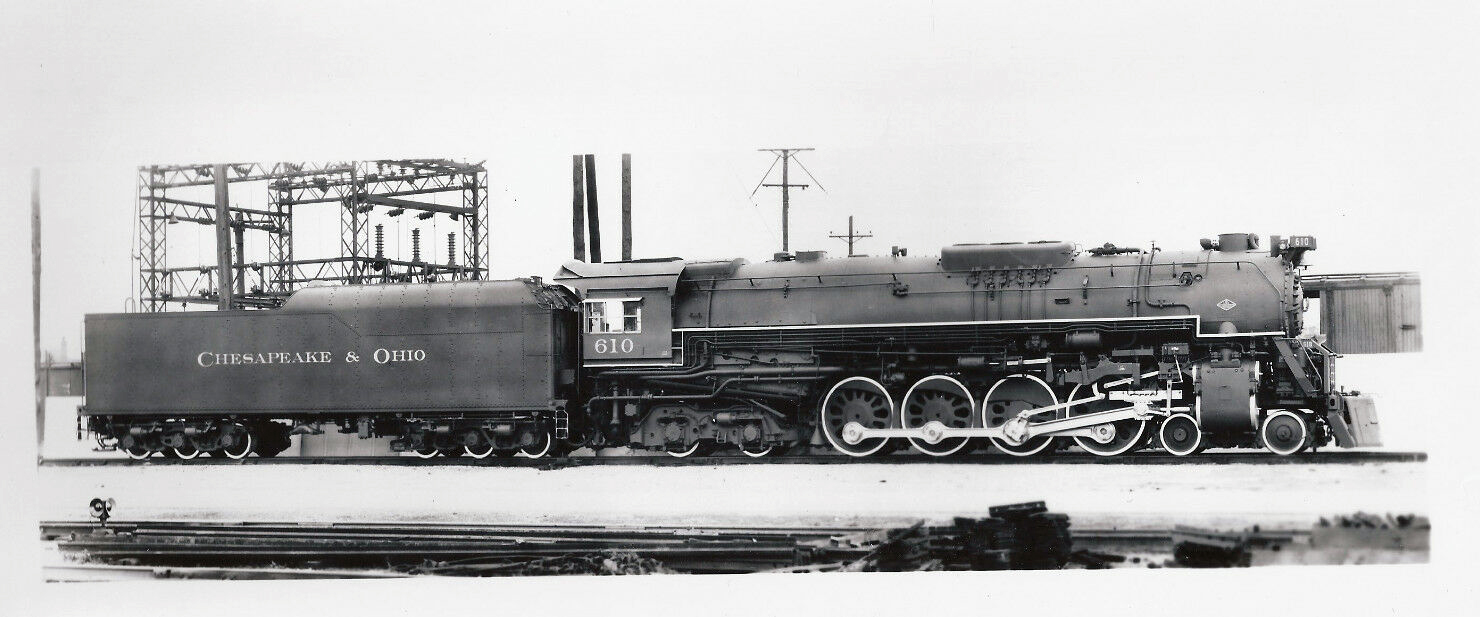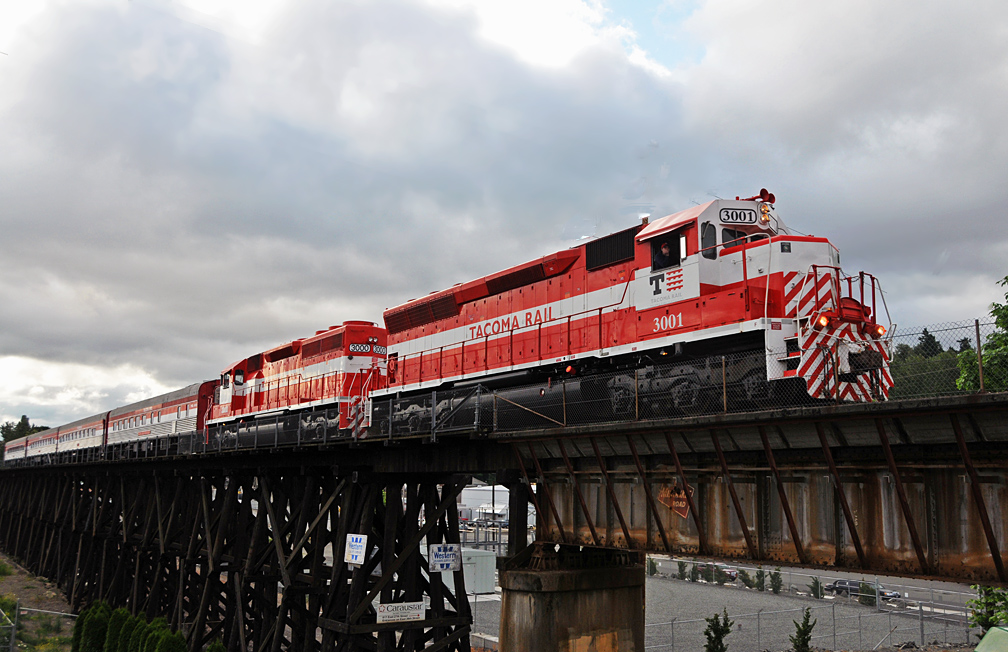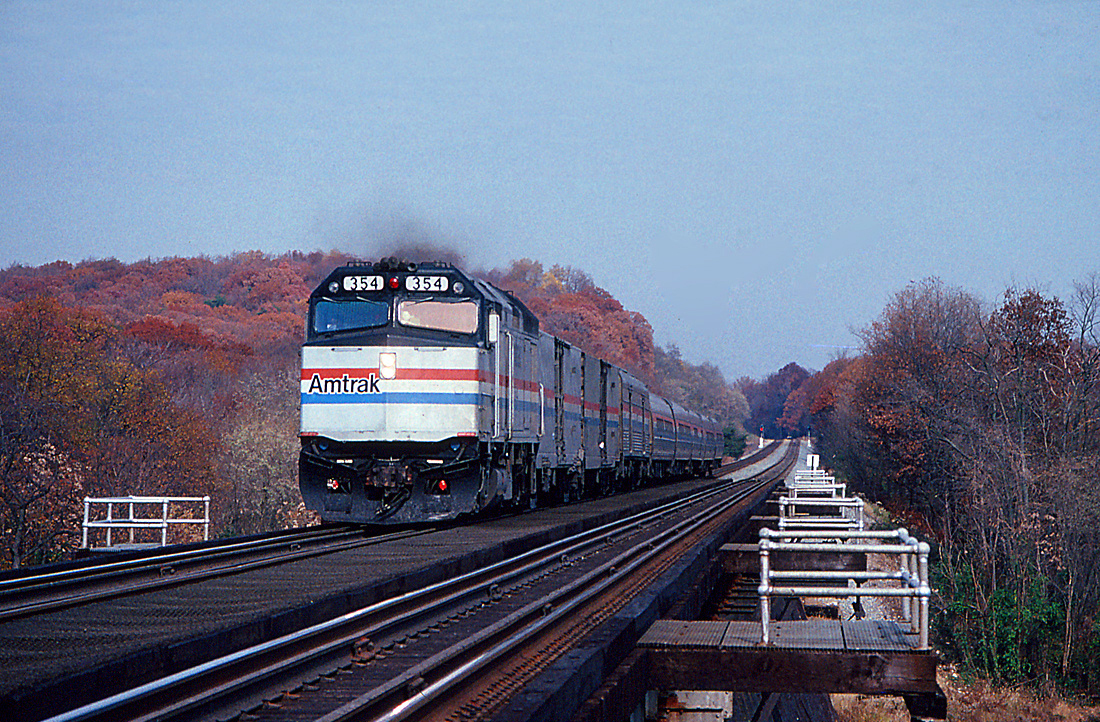- Home ›
- Landmarks ›
- Keddie Wye
The "Keddie Wye": Bridges, Map, Photos
Last revised: August 24, 2024
By: Adam Burns
Keddie Wye is a junction in the form of a wye on the Union Pacific located in Plumas County, California. Named after Arthur Keddie, the man who envisioned the Western Pacific and its route through the Feather River Canyon, the wye was constructed and completed in 1909.
The junction is notable for its two impressive curved trestles and the unique wye configuration that allows trains to either continue on the former Western Pacific's main line or swing onto/off of the "High Line" to Bieber, California. It is considered an engineering marvel and is a popular spot for railfans.
Most of the classic, well-known railroads we know today featured at least one noteworthy feat of engineering. For the Western Pacific, this spot was the Keddie Wye in northern California.
Interestingly, the wye was not put into use until the early 1930s when the WP completed a new line to the north which added a gateway to Portland and Seattle in an attempt to compete with its larger rival, the Southern Pacific.
While the new route, unfortunately, did not result in the WP becoming a truly dominant force for Portland/Seattle - California traffic it remained an important artery for the railroad for many years.
After the WP was acquired by Union Pacific in late 1982 many feared the wye would be abandoned. However, thanks to its strategic engineering and easier grades, UP elected to retain the line and still operates it today.
Photos
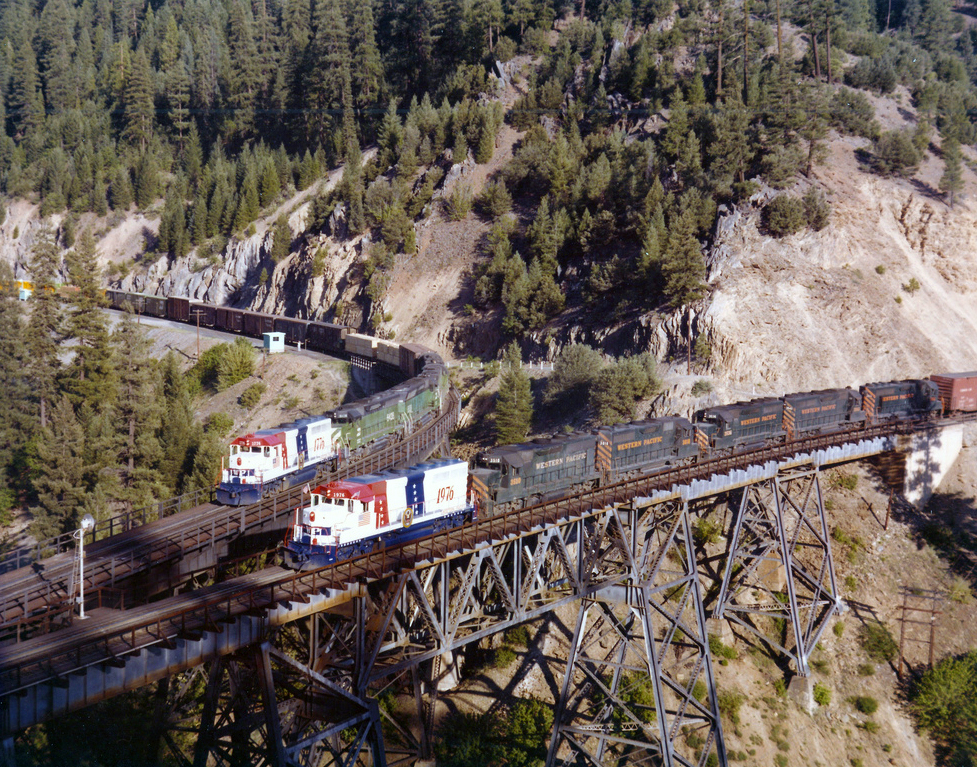 A Western Pacific publicity photo showing trains led by Bicentennial units GP40's #1976 and #1776 (coming off the connection to Great Northern's "High Line" at Bieber, California) pointed west (geographically north) on the Keddie Wye circa 1976.
A Western Pacific publicity photo showing trains led by Bicentennial units GP40's #1976 and #1776 (coming off the connection to Great Northern's "High Line" at Bieber, California) pointed west (geographically north) on the Keddie Wye circa 1976.History
The Keddie Wye is a remarkable feat of railway engineering whose conceptualization, design, and funding were orchestrated by the Western Pacific. This y-shaped junction is a masterpiece designed to navigate the tricky terrain of California's Feather River Canyon.
At milepost 277 along the WP main line between Salt Lake City and Oakland lies the small town of Keddie named after the company's first president and chief planner, Aurthur Keddie.
After November 1, 1909 the spot was known as the company's golden spike location where its eastern line to Salt Lake City connected with its western route to Oakland. It also sat towards the eastern end of the WP's legendary Feather River Route through the Feather River Canyon between Oroville and Portola, California.
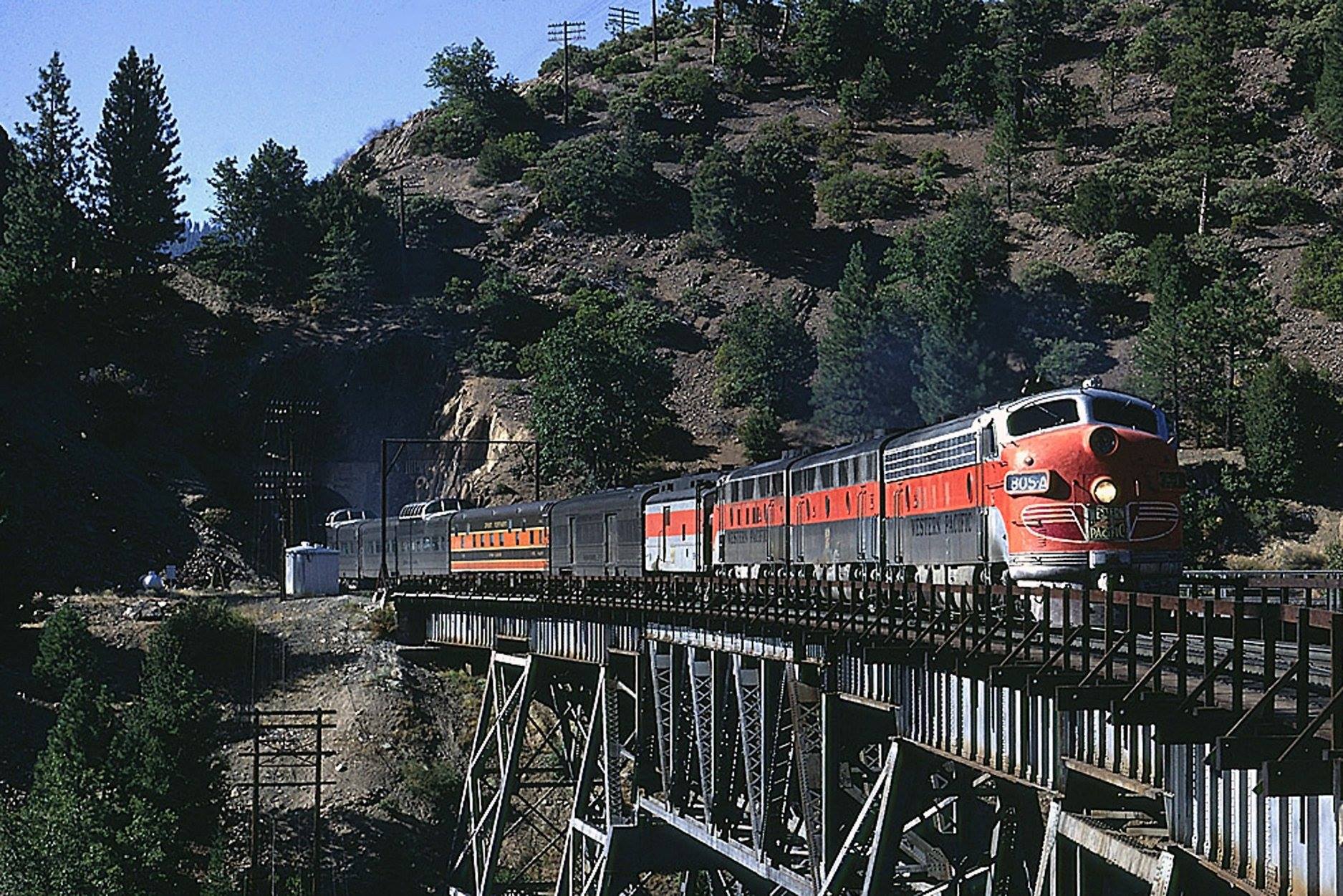 "Labor Day weekend, September 1969, Western Pacific's 'California Zephyr' is eastbound crossing Spanish Creek at Keddie, CA. Only a few months remained before this train passed into history." - Drew Jacksich
"Labor Day weekend, September 1969, Western Pacific's 'California Zephyr' is eastbound crossing Spanish Creek at Keddie, CA. Only a few months remained before this train passed into history." - Drew JacksichConstruction
While the Western Pacific was the vision of Arthur Keddie it was built with the financial backing of George Gould, son and heir to father Jay Gould, the legendary tycoon.
It took Keddie decades to finally see his railroad completed as Collis Huntington blocked his every effort in an attempt to retain a stranglehold on the Sacramento - Salt Lake City market.
Construction of the WP's line through Keddie, California began in 1909, setting into motion several months of intense and dedicated effort by numerous workers. The labor bore fruit when the engineering marvel's initial leg (the main line) was officially completed on November 1, 1909.
An ambitious plan was decided, interestingly just after the start of the Great Depression, to build a branch northward from Keddie to Bieber, California and a connection with the Great Northern, which eyed a southerly connection to California.
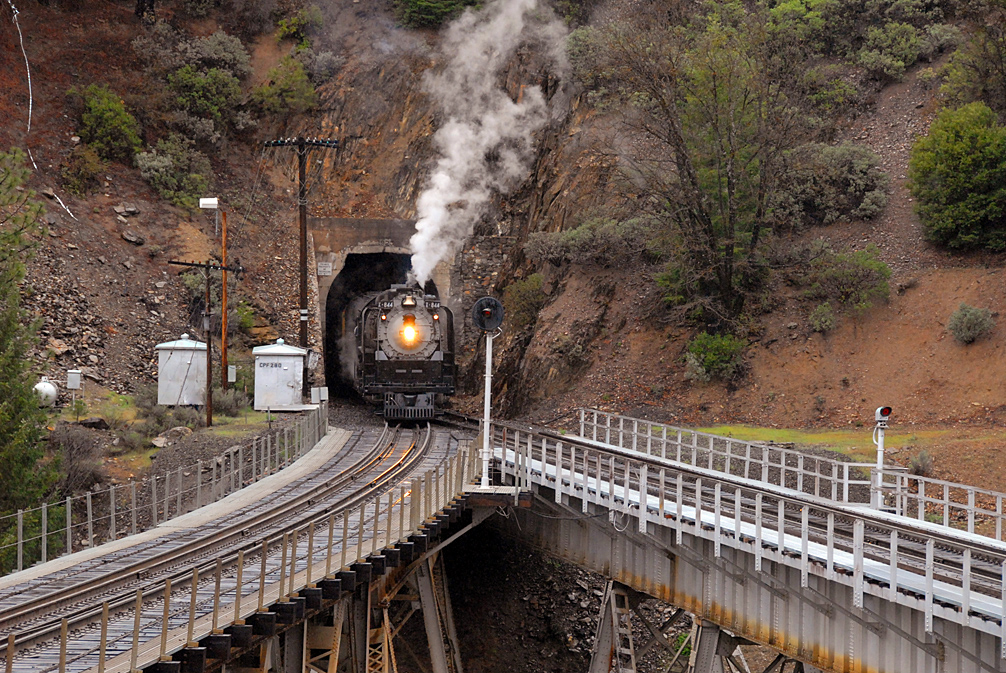 Union Pacific 4-8-4 #844 is about to cross Spanish Creek Trestle along the Keddie Wye on May 2, 2009. Drew Jacksich photo.
Union Pacific 4-8-4 #844 is about to cross Spanish Creek Trestle along the Keddie Wye on May 2, 2009. Drew Jacksich photo.The only way to do this was complete another crossing of Spanish Creek just to the north, requiring a short tunnel to the east; doing so created perhaps one of the most unique and rare wyes ever attempted in railroading.
What became known as the "Inside Gateway," included GN's extension from Bend to Bieber, California (91.6 miles) while the Western Pacific's "High Line" veered northward from Keddie to Bieber (112 miles).
A formal Golden Spike was held in Bieber on November 10, 1931 signaling completion of the line. The new connection provided for a lucrative partnership between the two railroads, handling traffic from Oakland/San Francisco to Chicago in competition against Southern Pacific.
The wye comprises two impressive truss bridges known respectively as Spanish Creek Bridge and Indian Creek Bridge. The former bridge, soaring 176 feet above the ground spans 569 feet while the Indian Creek Bridge stands 118 feet high and stretches 447 feet in length.
In addition to the two remarkable bridges, the wye also incorporates a strategically constructed tunnel,#31, which was part of the original main line. There is also tunnel #32 built as part of the Inside Gateway extension.
Key Features
Other features of the wye sometimes overlooked include:
- Tunnel #31 (this bore was part of Western Pacific's Oakland-Salt Lake City main line and comprises the northern section of the wye)
- Tunnel #32 (located to the south, this bore provides a direct connection to the Great Northern's 'Inside Gateway')
- Keddie Yard (located just to the south of the wye [railroad east] and sits along the Oakland/Salt Lake City main line)
Most photographs of the wye are either taken to the southeast (like the one below) from Highway 70/89, showing trains swinging off the old Inside Gateway connection and heading west on the main line to Oakland, or feature trains heading south (railroad east towards Portola/Salt Lake City) as they exit Tunnel #31
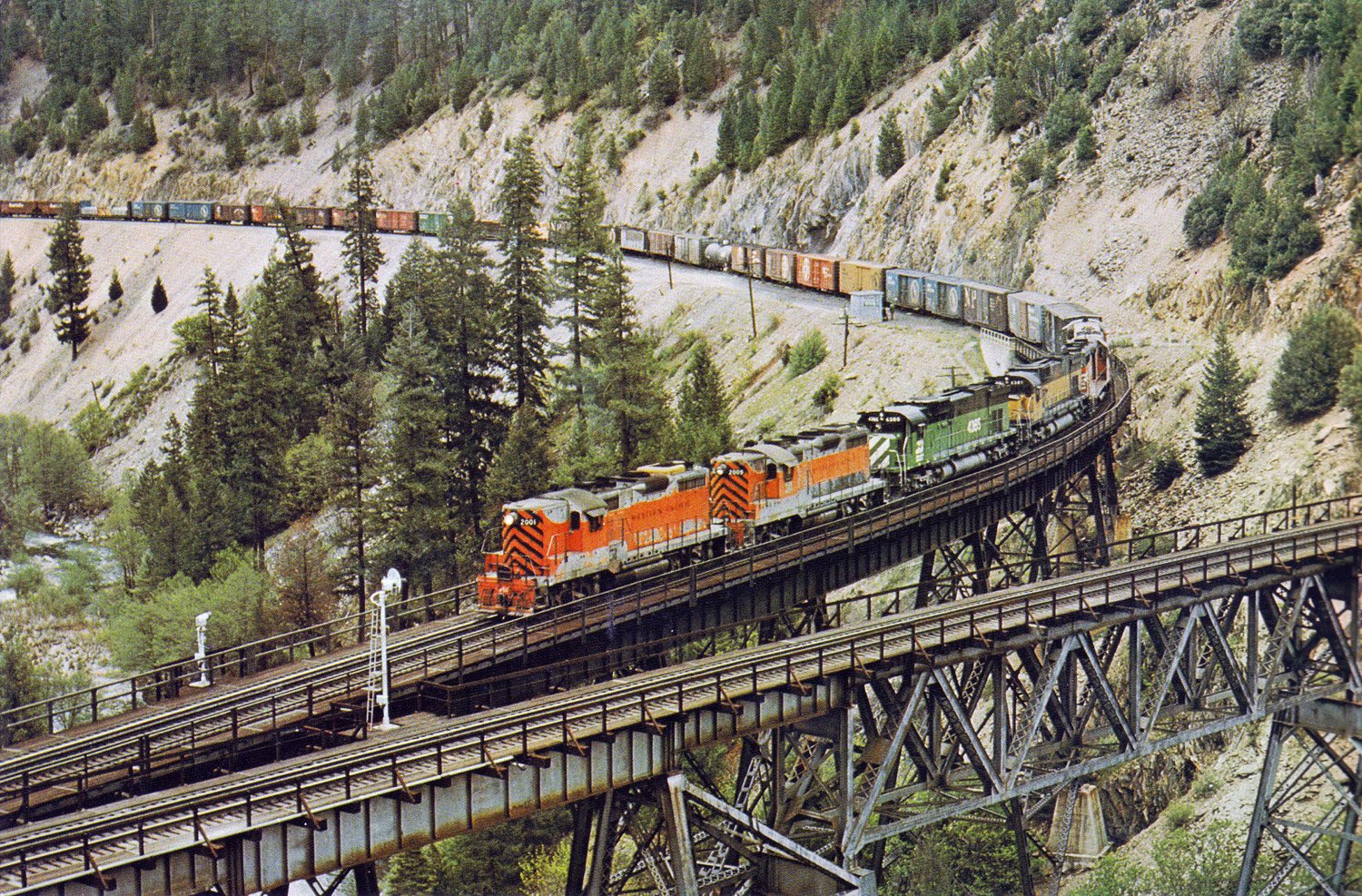 Western Pacific GP20's #2001 and #2009 lead Burlington Northern C636's #4365 and #4361, a GP35, and a Western Pacific U-boat off the "High Line" along the Keddie Wye on May 7, 1972.
Western Pacific GP20's #2001 and #2009 lead Burlington Northern C636's #4365 and #4361, a GP35, and a Western Pacific U-boat off the "High Line" along the Keddie Wye on May 7, 1972.Inside Gateway
The new 204-mile Inside Gateway, unfortunately, was unable to break Southern Pacific's dominance but nevertheless remained a critical artery for both the Western Pacific and Great Northern.
In 1935 the WP entered bankruptcy for a second time although was able to emerge from receivership due to World War II's traffic surge. From the 1950s through the 1982 Union Pacific acquisition WP remained a generally well-managed system.
After the railroad saw new leadership in 1970 under Alfred Pearlman it entered perhaps its most lucrative period. Pearlman was well known for turning around the New York Central just before it merged with the Pennsylvania Railroad and he worked his magic again at the WP. As such, it was an attractive asset to larger lines, which led to the Union Pacific acquisition.
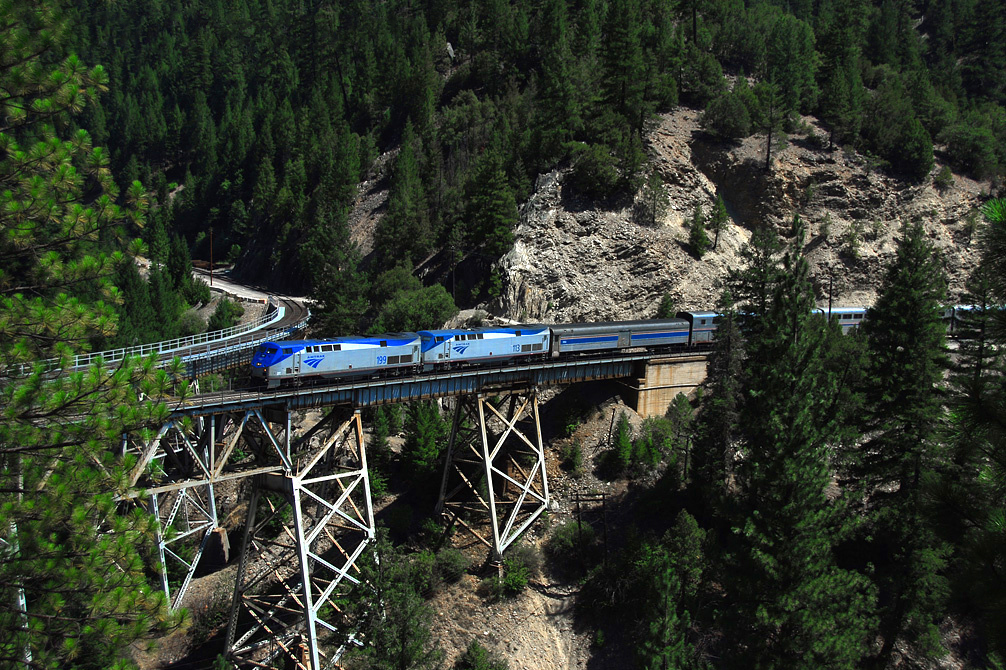 Amtrak's popular "California Zephyr" is in familiar territory as it passes over Spanish Creek Trestle heading westbound along the wye, led by P42DCs #199 and #113, on August 12, 2008. Drew Jacksich photo.
Amtrak's popular "California Zephyr" is in familiar territory as it passes over Spanish Creek Trestle heading westbound along the wye, led by P42DCs #199 and #113, on August 12, 2008. Drew Jacksich photo.Today
UP spent millions of dollars upgrading the WP's former Salt Lake City to Oakland main line, despite the fact that as late as 1997 it was strongly considering abandoning the route due to the constant headache of wildfires and rock slides.
However, to date the line remains an important artery for the Class I. In 1997 Union Pacific sold the Inside Gateway to BNSF, which still maintains the route today.
For railfans, today you can still watch trains ply Keddie and are afforded an excellent location for photographs with state route 70 crossing the location just to the north.
Legacy
The Keddie Wye's legacy is in its enduring success and the engineering innovation it represents. Its existence even inspired the creation of a similar railway junction in India, the Dudhsagar Waterfalls, proving that Keddie's invention truly left its mark on the global railway map.
The wye is not just an active railway junction but also an object of study for railway enthusiasts and historians. Its unique positioning and construction offer a firsthand look at innovative railway engineering suited to the complex American landscape.
Over a century old, but still very much in operation, the wye exemplifies the longevity of well-executed engineering projects. It is a testament to the skill and ingenuity of the designers and builders who brought the concept to life.
Western Pacific’s vision for the Keddie Wye was one of progress and unity – a railway line that brought together separate regions, streamlined the transportation of goods and passengers, and helped build the backbone of the country's logistics infrastructure.
The historical and technological significance of the wye has garnered it recognition and adoration from train enthusiasts, historians, and casual observers alike. It stands as a historical railway landmark and testament to Western Pacific's pioneering role in American rail transport.
Union Pacific’s current ownership and operation of the wye keeps this formidable part of railroad history alive. The company's stewardship ensures the continued functionality and preservation of this key railway landmark.
In conclusion, the Keddie Wye is a historic marvel of railway engineering, with a legacy that bridges the American landscapes and continues to inspire generations of engineers. It remains a testament to the ingenuity and vision of Arthur Keddie and the Western Pacific Railroad - a symbol of early American progress in transport innovation.
Recent Articles
-
C&O 4-8-4 Locomotives: Specs, Roster, Photos
Apr 12, 25 09:52 PM
Chesapeake & Ohio's fleet of 4-8-4s, listed as Class J-3/a, included twelve examples of 4-8-4s the railroad termed "Greenbriers." Today, #614 survives. -
Guide To Amtrak/Passenger Trains In Washington
Apr 12, 25 02:00 PM
Exploring Washington state by rail offers a unique and memorable travel experience. Learn more about these services here. -
Guide To Amtrak/Passenger Trains In Virginia
Apr 12, 25 01:51 PM
Virginia's passenger trains provide an ideal way to explore the state's diverse landscapes, historical sites, and vibrant cities. Learn more about them here.
